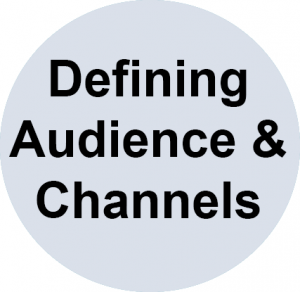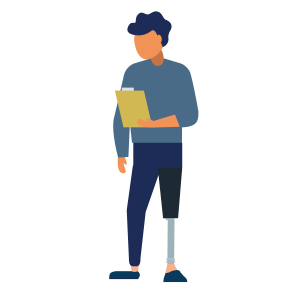30 Communication Tools and Strategies | Key Components of a Communication Plan | Measuring success




Your communications plan is a living document, meaning it will constantly be adapted based on the success and failures you experience in the process of actioning your communications plan. It is important to build a reflective component into your communications plan to improve and optimize your plan.
To start, you need to define what success looks like to you and your team. This definition of success should relate directly to the SMART goals that you created in Step 1. Success may be tied to specific metrics of a communications platform (open rate of your newsletter for example), or they may be tied to the desired outcomes of your plan. In either case, understanding what success looks like is vital to the overall success of your communications plan.
Building on the examples provided in step 1, below are some examples of specific metrics and measurements you can use to measure success.
| Desired Outcome / Goal | Example of metrics and measurements that indicate success |
| Recognition from industry partners | Number of partnerships with industry, number of follow up inquiries, mentions in an industry publication that received your news release |
| Recognition from the academic community | Number of times cited in scholarly articles |
| Increased recognition by senior leadership at your institution | Mentions at leadership meetings, recognition in internal communications and newsletters |
| Engagement and interest in your research from undergraduate and graduate students at your institution | Number of inquires from students about joining your lab group, views on social media posts, engagement in surveys |
| Acknowledgement from media outlets about your research and academic activities | Inquiries from media outlets, Marketing and Communications department, # of medio mentions (see section on media monitoring) |
Take a few moments to think about what success looks like for your communications plan. How does this vision of success relate to your SMART goals?
Key Performance Indicators (KPIs)
Key Performance Indictors (KPIs) are important measures of your progress towards a specific result. Having clear KPIs in your communications plan can help your team maintain a clear focus on achieving your goals. Setting targets and tracking progress is an important part of managing your KPIs.
The terms “leading indicator” and “lagging indicator” are often used when describing KPIs. Leading Indicators results in future benefits that may not immediately be noticeable. Lagging Indicators represent how successful your actions were at achieving results in the past. It is important to recognize the difference between these two types of indicators and to understand why it is important to have both types of indicators in your overall plan.
Effective KPIs achieve the following 11
- Provide objective evidence of progress towards achieving a desired result
- Measure what is intended to be measured to help inform better decision making
- Offer a comparison that gauges the degree of performance change over time
- Include a balance between leading and lagging indicators.
What if “success” isn’t achieved?
If you did not achieve your intended goals after working through these four steps, it is time to reflect on what you could improve and adapt in your communications plan. Ask yourself the following questions to help pinpoint areas of improvement.
- Was the goal of my communications plan clearly defined using the SMART goal framework?
- Does my intended audience match with the goals set in step 1?
- Is my content and platform the correct choice for my intended audience?
- Did my KPI measure my goal?
- Are there any external factors that may have impacted my ability to reach my audience (for example – did a holiday or other important event, or significant surprise news story take the spotlight away from your message).
Identifying the best way to communicate your research is an iterative process that will vary greatly depending on your target audience, area of study, type of content, selected platform, and many other external factors not covered in this module. If you are not able to achieve your desired results, keep changing certain aspects of your communications plan and measure the results. Eventually you will find the winning formula that effectively and efficiently communicates your research and academic activities to your intended audience.

 Deeper Dive
Deeper Dive